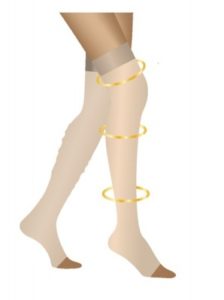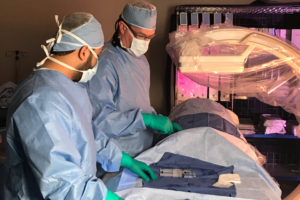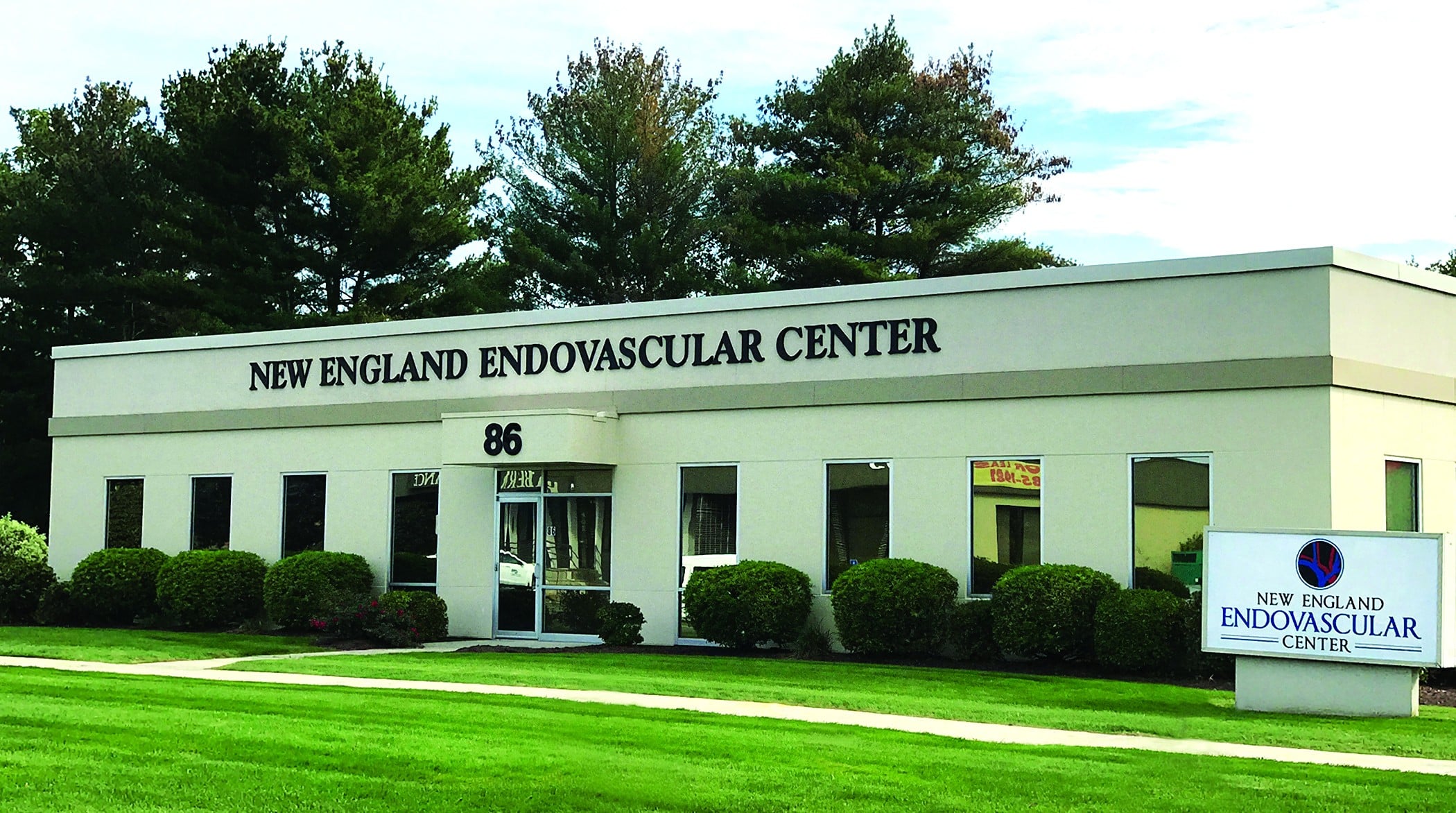DVT Treatment
The primary goals of DVT treatment are to prevent the blood clot from getting larger or from traveling to the lungs (called pulmonary embolism), to prevent post-thrombotic syndrome, and to reduce your chances of getting a DVT again.
DVT treatment options include the following:
BLOOD THINNERS
DVTs are commonly treated with anticoagulants (know as blood thinners). Either injected or taken as a pill, these drugs decrease your blood’s ability to clot. Contrary to popular belief, anticoagulants do not break down existing clots in the body. Rather, these drugs prevent the preexisting clots from growing in size and reduces the chances of more developing.
The injectable medications are administered as either a shot under the skin or by injection into your arm vein (intravenously). Heparin is typically given intravenously. Similar blood thinners that are injected under the skin include: enoxaparin (Lovenox), dalteparin (Fragmin), or fondaparinux (Arixtra). Injectable blood thinners will often be given for a few days, and then pills such as warfarin (Coumadin, Jantoven) or dabigatran (Pradaxa) are started. Periodic blood tests to check how long it takes your blood to clot are typically needed. After warfarin has thinned from your blood, the injectable blood thinners are stopped. Rivaroxaban (Xarelto), apixaban (Eliquis), or edoxaban (Savaysa) are given in pill form without the need for an injectable blood thinner. Commonly, blood thinner pills are administered for three months or longer and should be followed as directed by your prescribing physician. Pregnant women should not take certain blood-thinning medications.

COMPRESSION STOCKINGS
To reduce swelling secondary from DVT, compression stockings are worn on your legs. The stockings provide added pressure designed to reduce further blood pooling and clotting and should be worn for at least two hours per day.

ENDOVASCULAR THROMBECTOMY
Dr. Kahn is one of the leading experts in Western Massachusetts to perform endovascular thrombectomy. The goal is to rapidly break up clot, restore blood flow within the vein, and increase the chances of preserving valve function to minimize the risk of post-thrombotic syndrome.
Using image guidance, Dr. Kahn commonly inserts a catheter into the popliteal (located behind the knee) or other leg vein. The catheter threads into the clotted vein, its tip is placed directly into the clot, and then a “clot busting” drug (see below for more about clot busters) is infused directly to the thrombus (clot). The clot dissolves typically within one to two days.
Dr. Kahn will identify further narrowing in the vein by venography (which is an imaging study of the veins) and treat this with clot maceration, a balloon angioplasty, or stent placement.
CLOT BUSTERS
When there are more serious types of deep vein thrombosis or pulmonary embolism, or if other medications are not sufficiently working, you may be prescribed medication designed to breakup clots rapidly, called clot busters or thrombolytics. These are commonly given through an IV line to breakup blood clots or through a catheter placed directly into the clot. Dr. Kahn will inject the medication then he will implant a mechanical vacuum either called an AngioJet® catheter to suck out or CleanerXT® to break up any residual clots.
FILTERS
When medications cannot be administered to thin your blood, filters are often used as an alternative treatment method. Filters are inserted into a large vein (called the vena cava) in your abdomen. This filter is a small device that functions like a “food colander” to capture blood clots but allow normal liquid blood to pass, thereby preventing clots from lodging into your lungs. This procedure has proven to be extremely effective. The injection of clot busters and filters are typically placed during the same procedure, if both are warranted.
WHAT ARE THE BENEFITS OF DVT TREATMENT?
There is increasing evidence suggesting that clot removal via interventional catheter-directed thrombolysis in selected cases of DVT can improve your quality-of-life, prevent the debilitating condition of post-thrombotic syndrome, and reduce re-hospitalization and re-intervention.
ARE YOU A CANDIDATE FOR DVT TREATMENT?
You are a candidate if you are experiencing many of the DVT symptoms, your doctor suspects you may have DVT, or he/she has already diagnosed you with DVT.
WHAT SHOULD I EXPECT BEFORE MY PROCEDURE?
First, you will meet with Dr. Kahn for a consultation to discuss your symptoms and medical history. Pending any further diagnostic tests, he will provide treatment recommendations tailored to your specific situation. When endovascular thrombectomy or IVC filter placement is warranted, our staff will help you schedule the procedure. Dr. Kahn will follow-up with your doctors to inform him/her/them of the treatment plans.
Dr. Kahn will need to know which medications you are taking – our staff will tell you which medications to take and which ones not to take on the day(s) leading up to the procedure.
Also, please tell Dr. Kahn if you:
- Cannot take aspirin
- Have any allergies
- Have a history of bleeding problems
- Are planning to have any other surgeries or dental work performed soon
You may be asked to not eat nor drink anything for a period of time before your procedure.
WHAT SHOULD I EXPECT ON MY DVT PROCEDURE DAY?

After arriving and checking in with our front staff, our nurse will take you back to the prep/recovery room, and get everything set up for you in preparation for the procedure. A bedside locked cabinet and key are provided for your personal items.

An IV will be secured into your hand or forearm, allowing easy medication access for moderate sedation and pain control. Local anesthesia or moderated sedation is administered at the beginning of the procedure to provide enough sedation to make the procedure as comfortable as possible. You will be awake the entire time! You can listen to your favorite music or catch up on your favorite TV series during the procedure.

Later, our staff will safely transport you into the surgical room and prep you for the procedure. You’ll notice surgical drapes placed over much of the surrounding area. This keeps the surface area sterile and clean. In addition, the skin of the popliteal artery (located behind the knee) will be cleansed, in attempts to decrease chances of infection. Using ultrasound guidance, Dr. Kahn will make a small, painless pinhole nick in your skin to create an opening for the catheter to go through your skin barrier. Next, his catheter will be inserted into the clotted vein. Its tip is placed directly into the clot, and then a “clot busting” medication is infused directly to the thrombus (clot). Dr. Kahn will identify further narrowing in the vein by venography (which is an imaging study of the veins) and treat any warranted narrowing with a balloon angioplasty or stent placement, depending on your specific needs. While this procedure should not be painful, you may feel pressure.
WHAT IS THE RECOVERY FROM DVT EMBOLIZATION?
Following the procedure, the catheter will be removed. You will be transported back to the recovery room. Direct pressure will be applied to the catheter site for a few minutes. You can expect to stay at NEEC for approximately 4-6 hours following the procedure. Snacks and drinks will be provided at this time. You’ll need to plan to have someone drive you home once you have been discharged. Be sure to follow Dr. Kahn’s discharge instructions about taking your medications.
We Can Help!
New England Endovascular Center offers expertise, state-of-the-art imaging, and resources for the diagnosis, treatment, and management of DVT. We customize each patient’s treatment plan to maximize the best possible outcome. We are committed to providing excellent, personal patient care.
Call our office today to schedule a consultation at 413-693-2852.

Our providers are nationally recognized experts in minimally invasive therapies for treating DVT.
We provide treatment for DVT for patients throughout Western, MA and Northern, CT.
To learn more about treatments available at New England Endovascular Center call 413-693-2852 to make an appointment.
